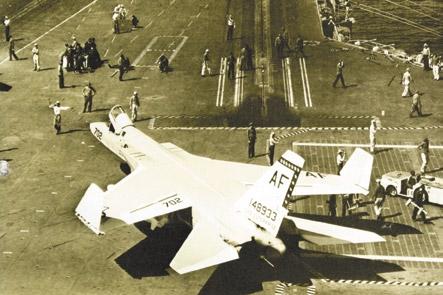
2 minute read
What a Difference 36 Years Make
By AMC(AW) Paul Hofstad
While cleaning our spaces, I found a copy of Mech dated 1971. As a history buff, I naturally was interested in the prize I had found, and, as an analyst assigned to the Naval Safety Center, I was interested in the information inside the magazine.
Advertisement
You would think through all of our technological advances and updates to instructions, we would be head and shoulders above our contemporaries from the past in all areas. I was wrong!
During surveys in 1971, the safety team found basically the same issues that we still find 36 years later. For example, our predecessors found that tool accounting was negligible, daily inspections of GSE were not being performed, and GSE operators were not licensed or qualified. They also saw publications were out of date, housekeeping was poor, and hydraulic test equipment was contaminated. People made unauthorized deviations from MRCs, failed to comply with directives, didn’t keep accessory record cards up to date, and didn’t hold or document safety meetings or the meetings were too irregular to be effective.
In 2005-06, along with that list, we also found: aircraft logbooks not being maintained—especially non
compliance with TDs and inaccuracy of dates within logbooks, improper identification of multi-piece tools, and failure to follow respirator SOPs. ERT drills were not being done, toolboxes were dirty and FOD filled, neutralizing agents for electrolyte spills weren’t available, respirators weren’t stored correctly, and respirator cartridges were not being changed regularly. Additionally, IH surveys weren’t posted and lithium batteries were stored improperly.
A headline in that 1971 issue also reported, “Navy Private Motor Vehicle Deaths Down.” The story stated that the number of deaths dropped from 432 in 1969 to 352 in 1970. The Navy and Marine Corps had 144 fatalities in FY06, and it was labeled a bad year. Some people might think that is a great number, but many people did not use seatbelts in 1971. Air bags had not been invented. Muscle cars roamed the streets, and speed limits were higher.
Today’s cars are built with roll-stability to prevent rollovers, and their computers contain more information than large-business mainframe computers did back then. In 1971, drinking and driving was more prevalent. The question I have is this, “Are we really doing any
We’ll test it on the bench fi rst.


There may be a trend starting. Watch for it carefully.
Let me show you the right way. Supervision of qualifi ed personnel gets the job done right.

better today?” With all the safety features in automobiles and alcohol and seatbelt awareness as high as it is, the traffic fatality rate should have dropped more than 41 percent these past 36 years.
We still have people who don’t wear seatbelts (it’s a mandatory DoD requirement on and off duty, by the way), and too many people still drink and drive. We have new technology and years of data to aid our decisions. Our counterparts weren’t so fortunate years ago, so how foolish are we not to have learned and improved even more?
Chief Hofstad is a maintenance analyst at the Naval Safety Center.










